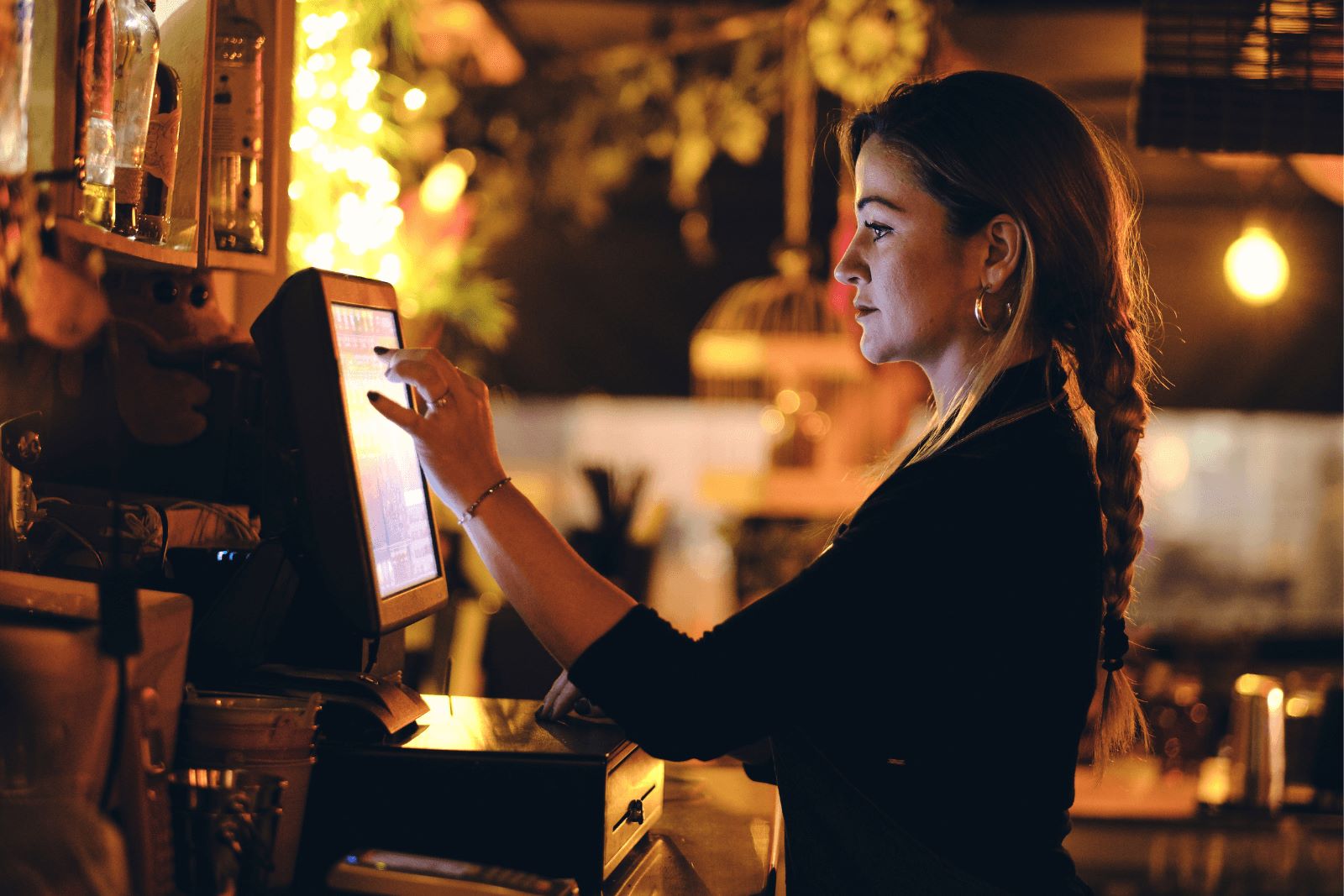When it comes to running a restaurant, many owners prefer to stick to the old-school way of doing business, from taking reservations and orders to payments.
And while there’s nothing wrong with not fixing something that isn’t broken, it might be a good idea to consider making use of restaurant technologies.Nowadays, there are tools and systems that can help you streamline your restaurant operations and not only make your staff’s jobs easier, but also enhance the dining experience for your guests.
In this article, we are going to cover some of the most important types of restaurant technology you should consider implementing in your establishment.
Table of contents
- Table Reservation Systems
- Inventory Management Systems
- Kitchen Display Systems
- Touchscreen POS Systems
- Contactless Payment Technology
- Conclusion
Table Reservation Systems
Seeing their restaurant full of happy guests is probably one of the most rewarding feelings for a restaurant owner.
However, achieving this is often a challenge.
If you follow the walk-in model, chances are you’ve experienced quiet periods, followed by a sudden influx of people that you don’t have the capacity to seat.
Moreover, if you keep track of all table reservations manually, you’ve probably made a mistake or two that landed you in an awkward situation with the guest.
Luckily, there is a tool that can help you avoid such scenarios—an online table reservation system.
A table reservation system is a cloud-based software solution that allows you to accept and manage reservations that your guests have made online.
According to the Restaurant Success report from 2019, having the option to accept online reservations matters to both guests and restaurants.
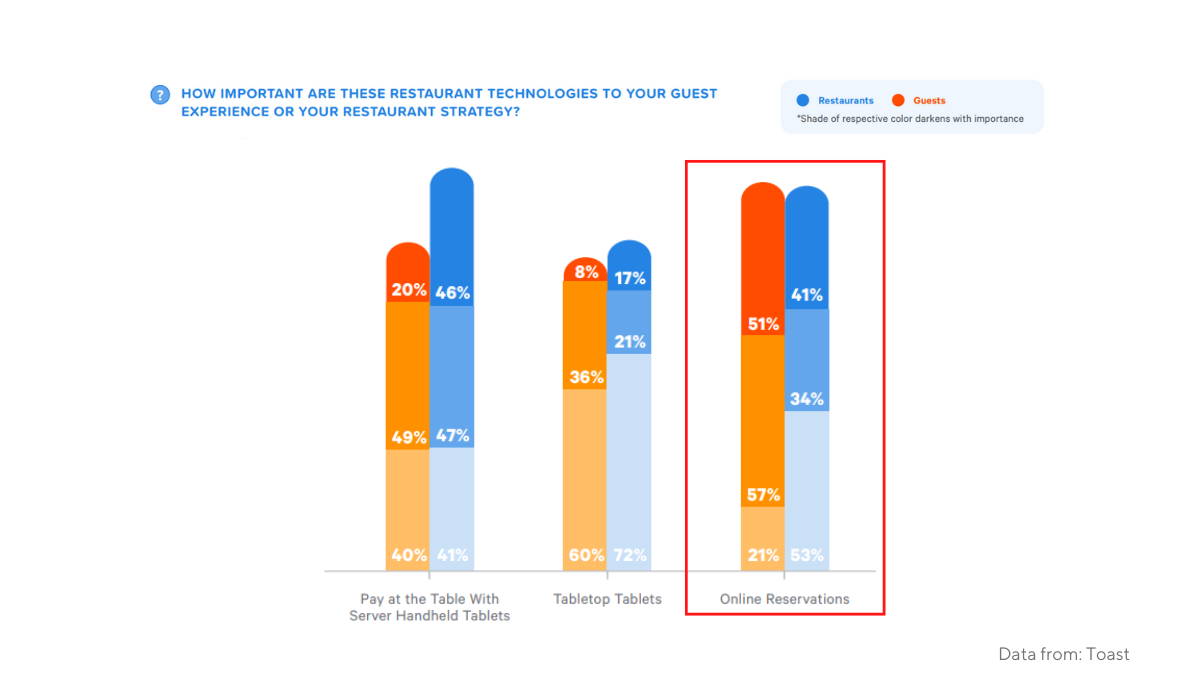
Source: Toast
As you can see in the chart above, 51% of guests and 41% of restaurant owners find the option to make reservations online extremely important.
Both parties saw value in this even a few years ago.
And while using an online table booking system is bound to make your guests’ experience more seamless, the benefits for your business are even greater.
First and foremost, implementing such a system is going to allow you to make better business decisions.
Think about it—how many times were you over- or understaffed because you had no idea how many guests to expect?
How many times have you ordered too much or too little inventory for the same reason?
With the right reservation system, you will be far less likely to worry about losing money or wasting inventory.
According to Investopedia, Tablein is, overall, the best restaurant reservation software on the market.
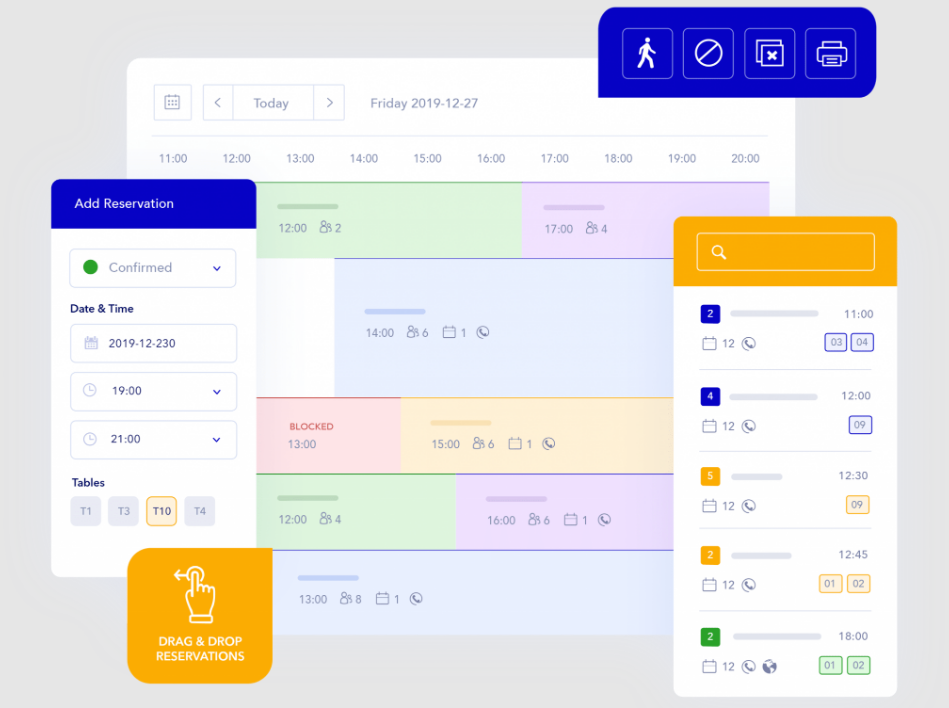
Source: Tablein
It comes with an abundance of features that make the entire reservation process a breeze.
Not only does it allow your guests to make reservations on the restaurant’s website, Google or Facebook page, but it also lets them choose a dining area and leave additional notes.
That way, your staff will know where to seat them, while also being aware of any special circumstances, from birthday celebrations to allergies.
Apart from that, Tablein will always check availability before allowing your guests to book a table, as well as let you control reservation times for individual tables.
In order to minimize the number of no-shows, the system also sends your guests reservation-related reminders.
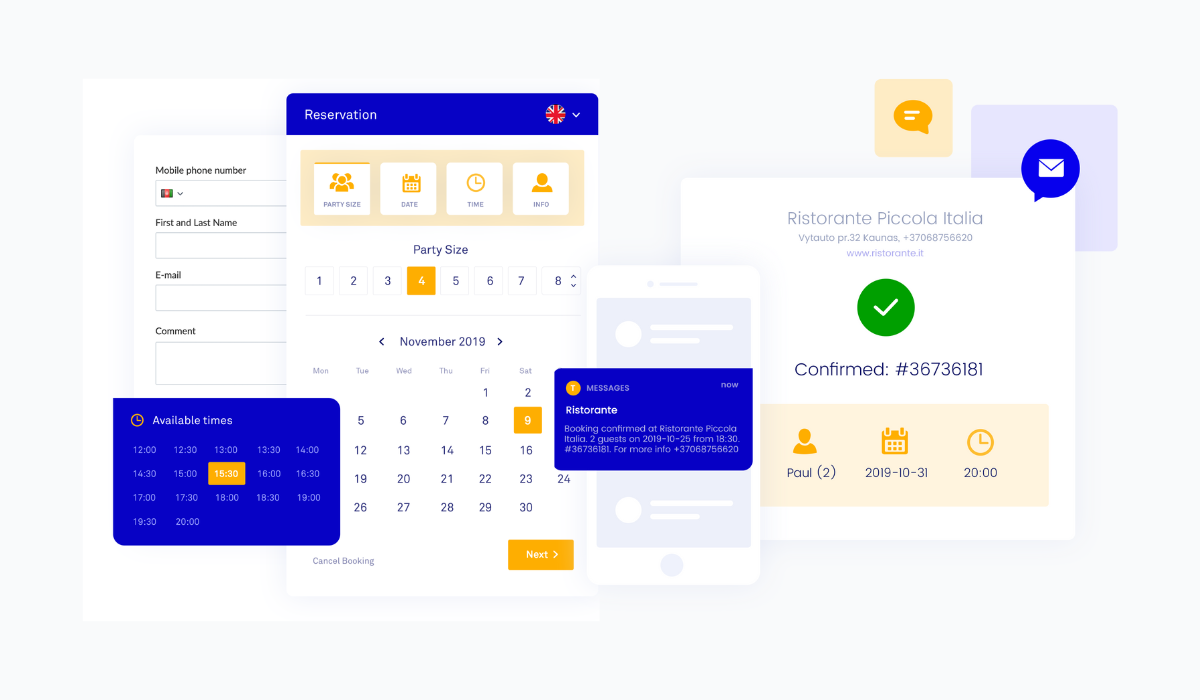
Source: Tablein
In short, once the guest has made their reservation via Tablein, all there’s left for you and your staff to do is greet your guests with a smile and serve them delicious food.
Inventory Management Systems
Determining exactly how much inventory to order is a struggle many restaurants face.
If you order too much, you’re risking ingredient spoilage.
But if you order too little, you’re likely to find yourself in a situation where you can’t serve your guests the dish they want because you’re short on ingredients.
Both of these are a no-go, as they are bound to negatively affect your business.
And struggles with inventory optimization can cost more than you’d think.
According to LeanPath's (a food waste prevention company) marketing director Sam Smith, food waste in commercial kitchens amounts to around 4% to 10% before that food is even used in the kitchen.
He goes on to explain:
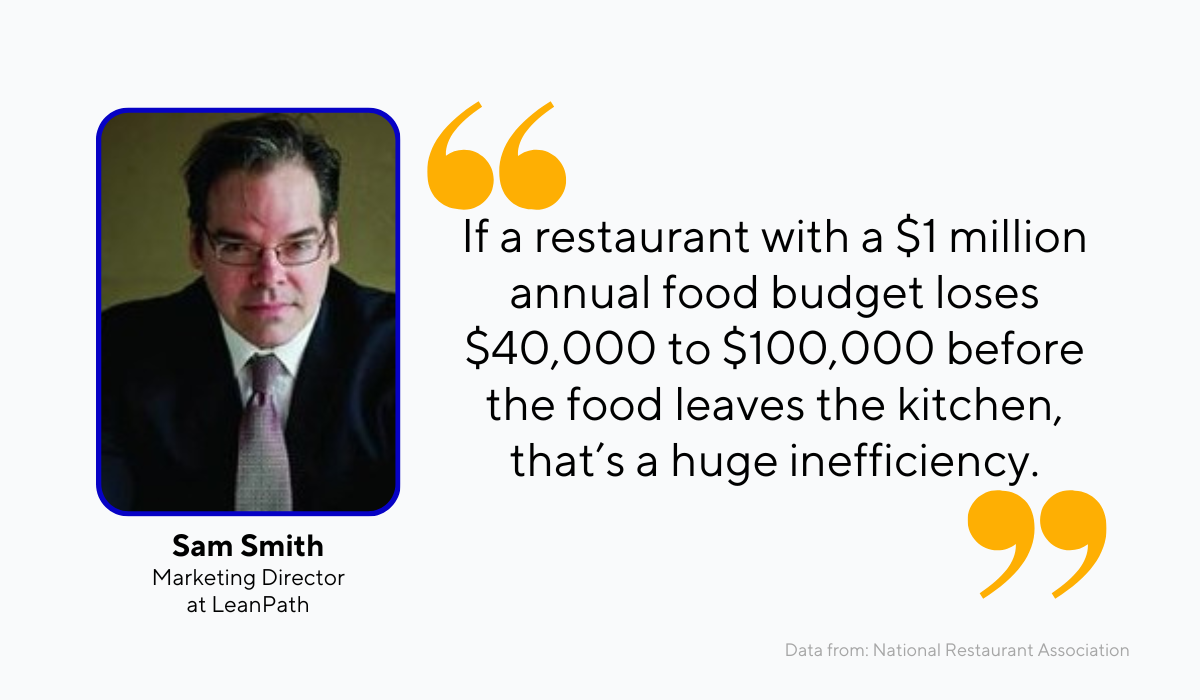
Source: Tablein
This begs the question: how can restaurants reduce the amount of food waste they produce and save money in the process?
The answer is—by investing in an inventory management system.
The purpose of such a system is to help restaurants “keep the right amount of food and ingredients on hand so they have enough stock to serve all customers and also avoid spoilage and loss.”
The proper software can keep track of inventory throughout its entire lifecycle—from the moment it comes in from your suppliers to the moment it’s used.
It allows you to check and update inventory levels and has the ability to monitor usage trends, as well as to automate the reordering process based on those trends.
You may feel like paying for separate software just for inventory management is redundant when you can simply use pen and paper.
However, going digital can save you a lot of time and money by ensuring more accuracy when calculating food costs.
And it is not unusual to use different software for different purposes. In fact, businesses now often use over 50 different software applications.
Why go through the trouble of trying to manually calculate the cost per dish, plate, or ingredient when software like MarketMan can do it for you?
Take a look at this review written by a restaurant owner who opted for MarketMan for inventory management:
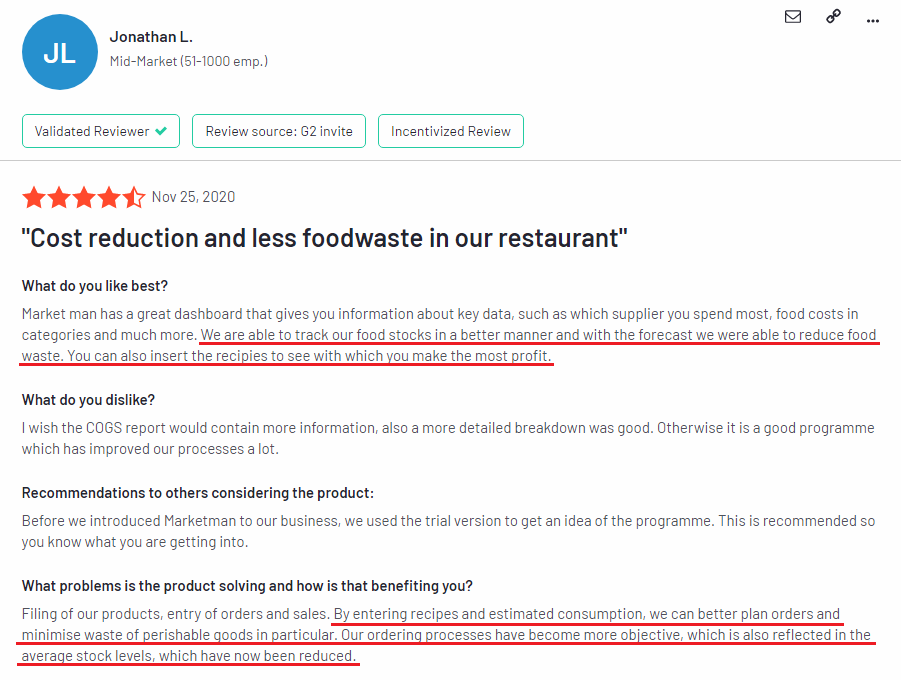
Source: G2
Not only did using inventory management software help this business keep track of stock and reduce food waste, but it also made it possible for them to plan their orders better.
Bottom line, determining what amount of inventory is necessary in order to serve your customers without producing a lot of waste can be challenging, but it’s not impossible.
With an inventory management system that is the right fit for your restaurant, you’ll be able to assess your needs better and make business decisions that will save you time and money.
Kitchen Display Systems
If you want to create a positive dining experience for your guests, you need to ensure they get seated and served in a timely manner, right?
And how do you achieve that?
Well, you’re going to need to find an efficient way to streamline your order management.
Using a kitchen display system can help you with that.
A kitchen display system is a digital solution for managing customer orders and is a more streamlined way for communication and collaboration between your staff members.
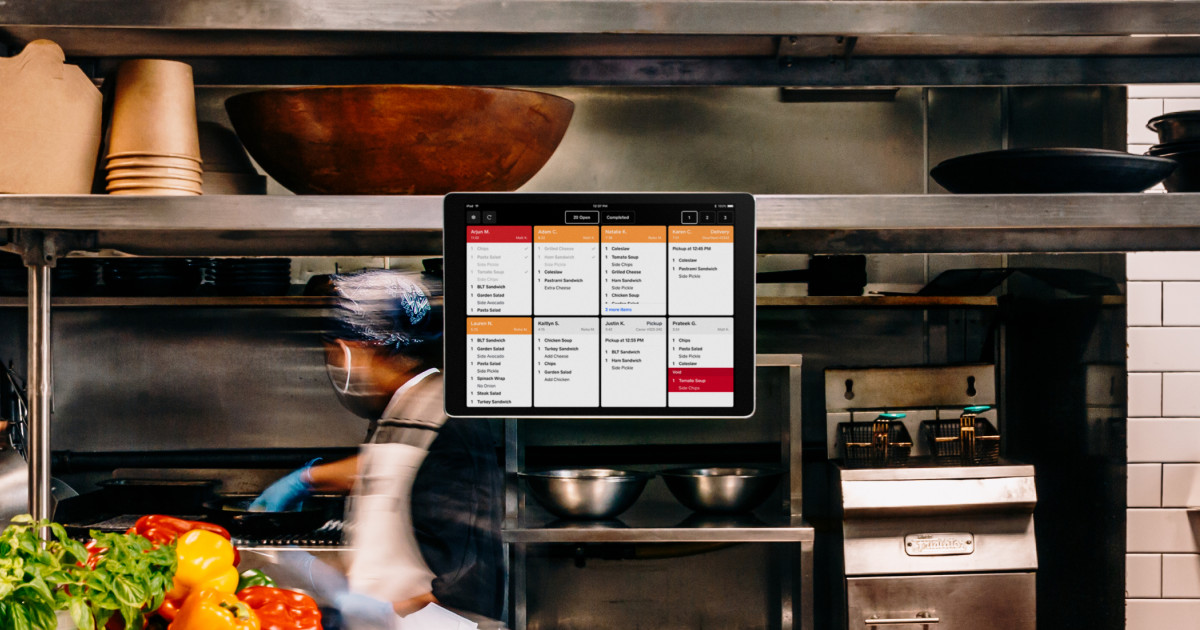
Source: Square
Used in place of paper order tickets that can get greasy and mixed up, this system can be a lifesaver for your back-of-house staff.
It’s not beneficial for full-service restaurants either.
For example, a cheese & wine shop and deli owner Jody Klein explains that using a kitchen display system has saved her from struggling with missing and unfulfilled orders.
“It’s easier for the food staff to stay organized while making sure all orders are fulfilled as soon as possible,” she says.
But how does a kitchen display system actually work?
It all starts at the front of the house. The server takes the order from your guests and inputs it into the POS system that is connected to your kitchen display system.
Once the order has been processed, it automatically appears on the display screen in the kitchen. Like this, for example:
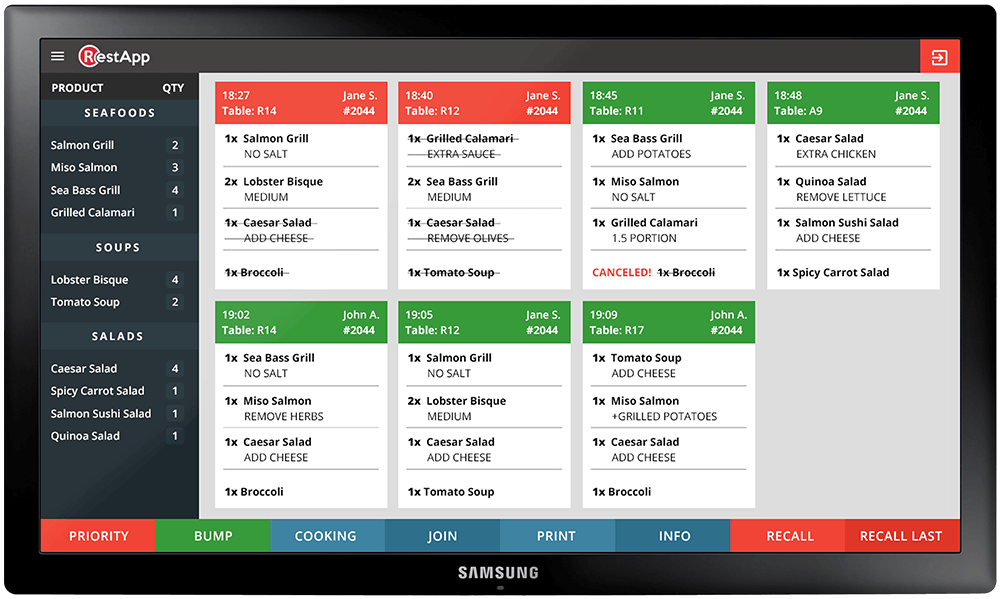
Source: RestApp
This means that the kitchen staff no longer has to wait for the server to bring the entire order ticket manually to them.
All they need to do is check the display, and they can start the preparation process immediately.
The display screen can also show which table each dish is going to, and what customizations the guest has requested.
Because of that, you don’t have to worry about different parts of the order coming to the table at different times, or serving the guest a dish with incorrect or missing ingredients.
A system like this allows your establishment to work like a well-oiled machine, so it’s definitely worth considering.
Touchscreen POS Systems
Another piece of technology that can make the process of placing orders at your restaurant more efficient is a touchscreen point of sale (POS) system.
As the name suggests, touchscreen POS systems allow users to tap the screen of the device in order to complete an action.
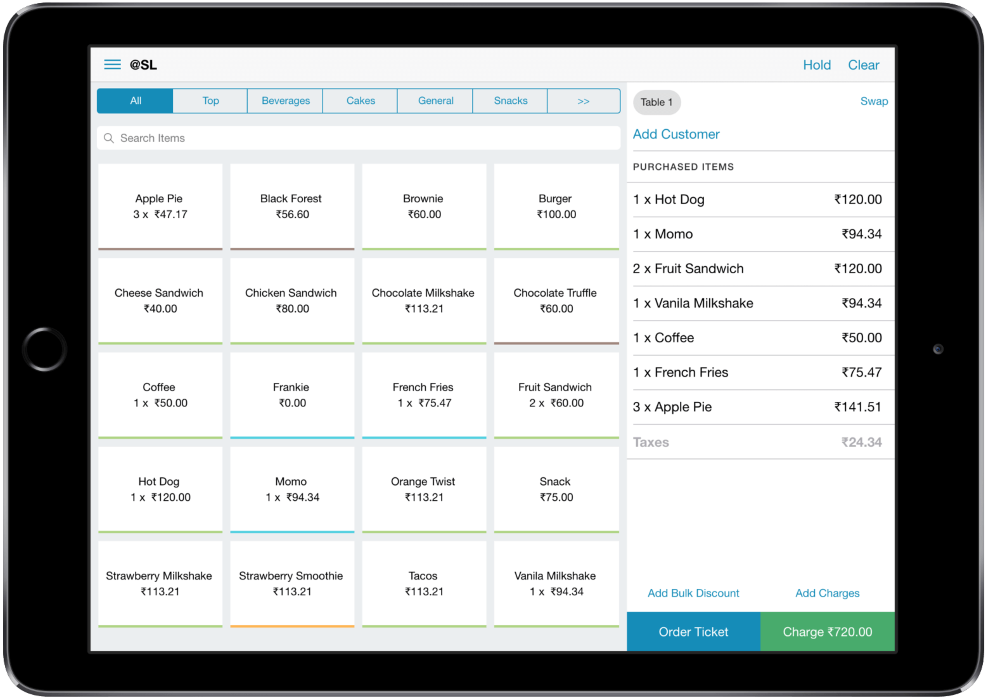
Source: SlickPOS
Using a POS system makes taking orders and payments quick and easy.
As shown in the image above, touchscreen POS systems have an intuitive interface that allows the staff to input and modify orders, send them to the kitchen and initiate payment in just a few taps of the screen.
When it comes to choosing the right touchscreen POS system for your restaurant, there are two factors to pay attention to—the durability of the hardware and the user-friendliness of the software.
The restaurant environment can be fast-paced and hectic.
This means that you need a system with a robust POS terminal and software that even the least tech-savvy staff members can get the hang of quickly.
Before you invest in a touchscreen POS system, make sure to check out some reviews online.
For example, this Upserve review goes to show how beneficial a system like this can be.
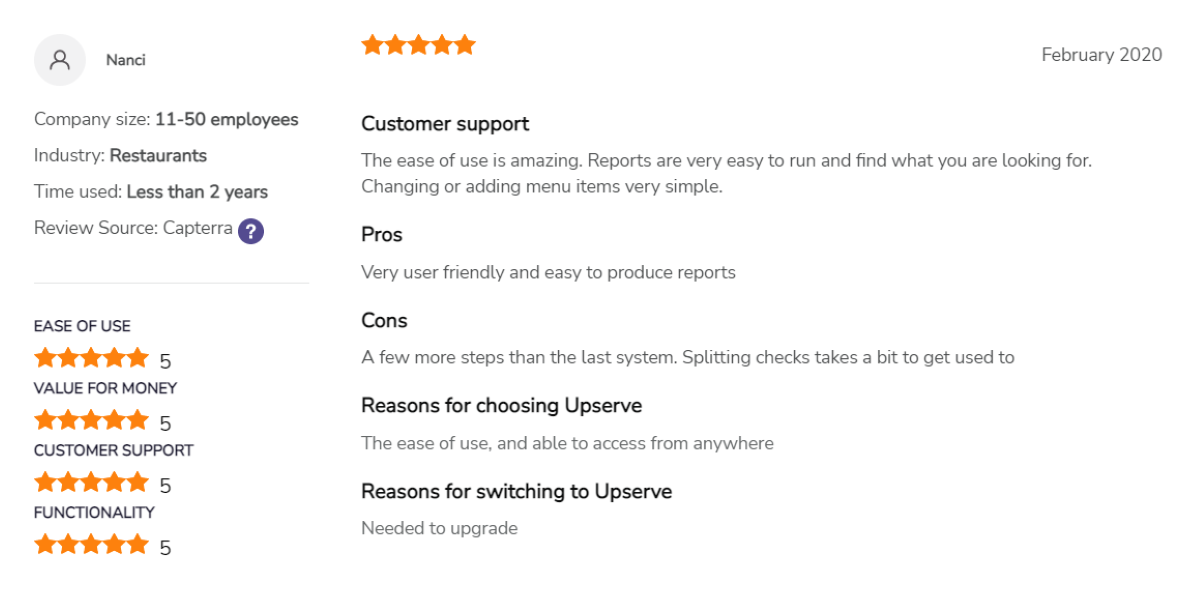
Source: Software Advice
Touchscreen POS systems have become an integral part of many restaurants today, thanks to the fact that they improve both the guest experience and the efficiency of operations.
So, if you’re still unsure about whether you need one or not, consider opting for a free trial period.
That will allow you to test out both the hardware and the software and make the right decision for your business.
Contactless Payment Technology
The last type of restaurant technology that we’re going to discuss in this article is contactless payment technology.
This technology allows you to take payments not just via card, but also via mobile phones and smartwatches (devices that have an NFC chip), making it a big convenience for guests.
This payment method soared in popularity during the COVID-19 pandemic due to its connection to safety and cleanliness, and one Mastercard study shows it’s used by a vast majority of respondents.
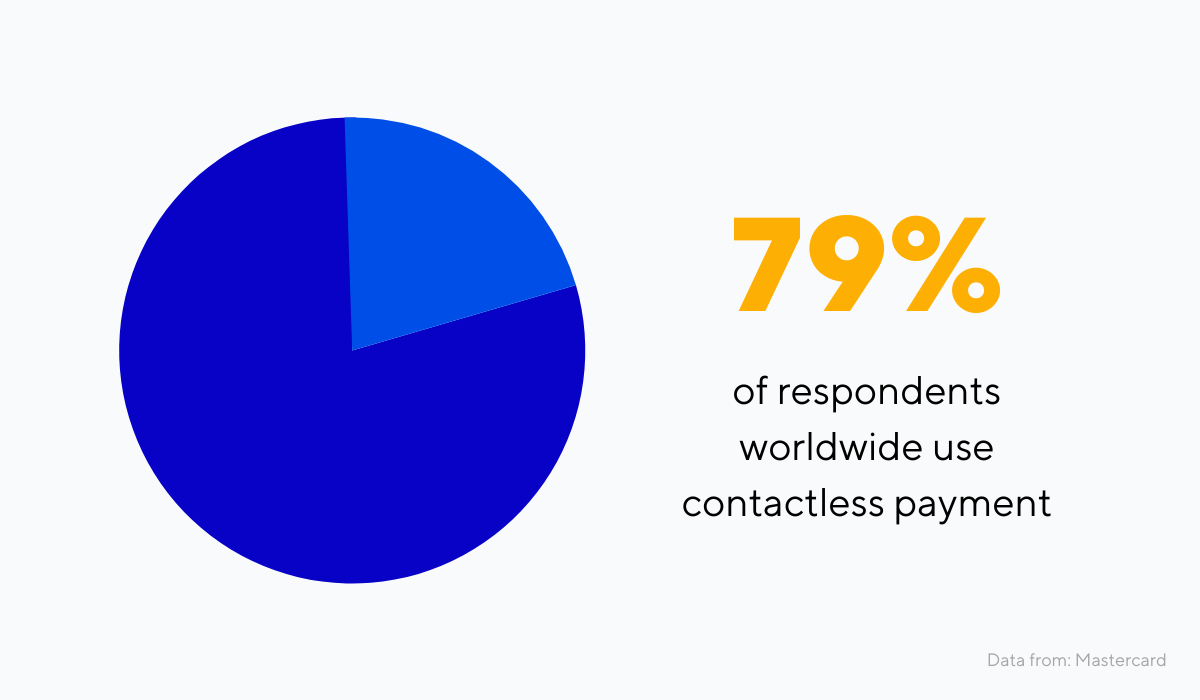
Source: Mastercard
Given its popularity, it might be a good idea to introduce contactless payment as an option at your restaurant if you haven’t done so already.
The way it works is simple: once the guest is ready to pay for their meal, all they need to do is wave their card or mobile phone over your mobile POS terminal.
The terminal then communicates with the chip in the card or a device and initiates the transaction.
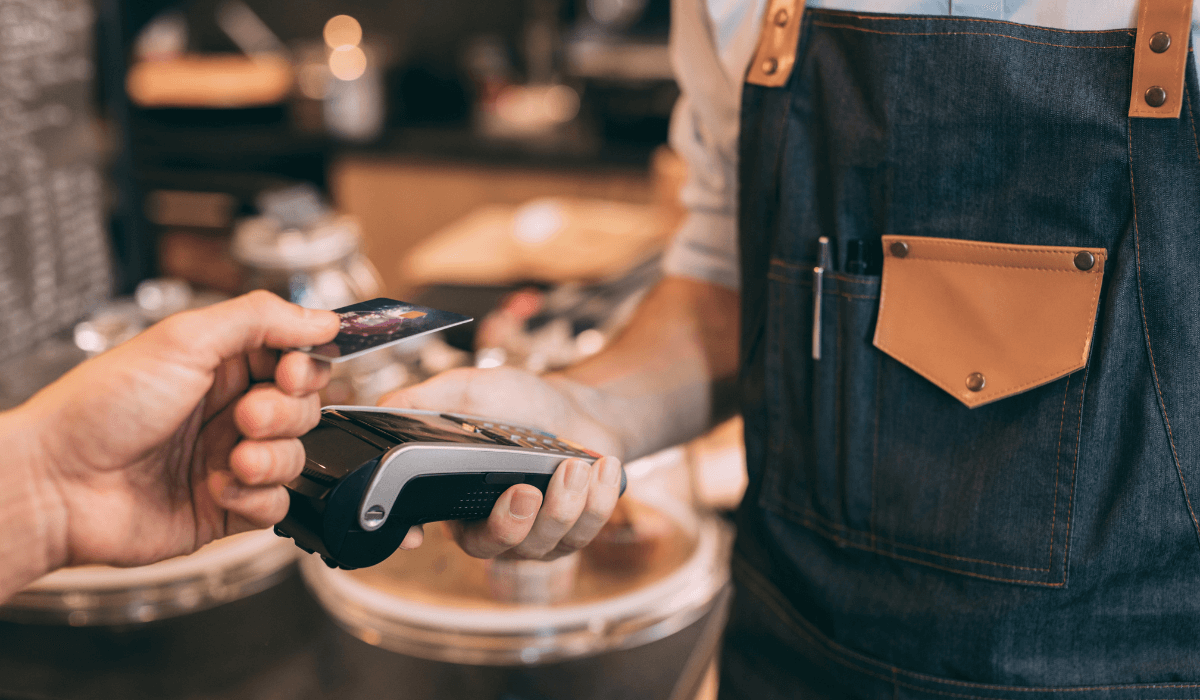
© filadendron via Canva.com
The whole process takes no more than a few seconds, which makes contactless payment both quick and convenient.
Because the payment method doesn’t leave their person, your guests don’t have to worry about their sensitive information being compromised, which can elevate their experience.
And this technology brings benefits not only to your guests but also to your staff.
For your staff, it means less running back and forth with guests’ cards on a busy Friday night. Having the customer tap their card or phone saves time and allows you to turn more tables.
Overall, introducing the option of contactless payment at your restaurant is a great way to show your guests that you’re keeping up with the industry trends and want to make their experience with your restaurant better.
Conclusion
We hope this article has shown you the potential of various restaurant technologies.
Software today has the power to help you streamline your restaurant operations and greatly improve the guest experience at your establishment.
And as we saw, there are various ways to do so.
From POS systems, online table reservations, to inventory management and digital kitchen displays, restaurants today have many options for automatizing otherwise time-consuming tasks that are liable to human error.
So make sure to take advantage of at least some of these technological advancements and keep your restaurant competitive now and in the years to come.
Get a 30-day Exclusive Trial
As a Tablein blog reader, you’re eligible for an exclusive 30-day free trial to experience our simple reservation solution for your restaurant.
Enter your business email, and we’ll send you all the steps needed to create your account.
Share this
You may also like
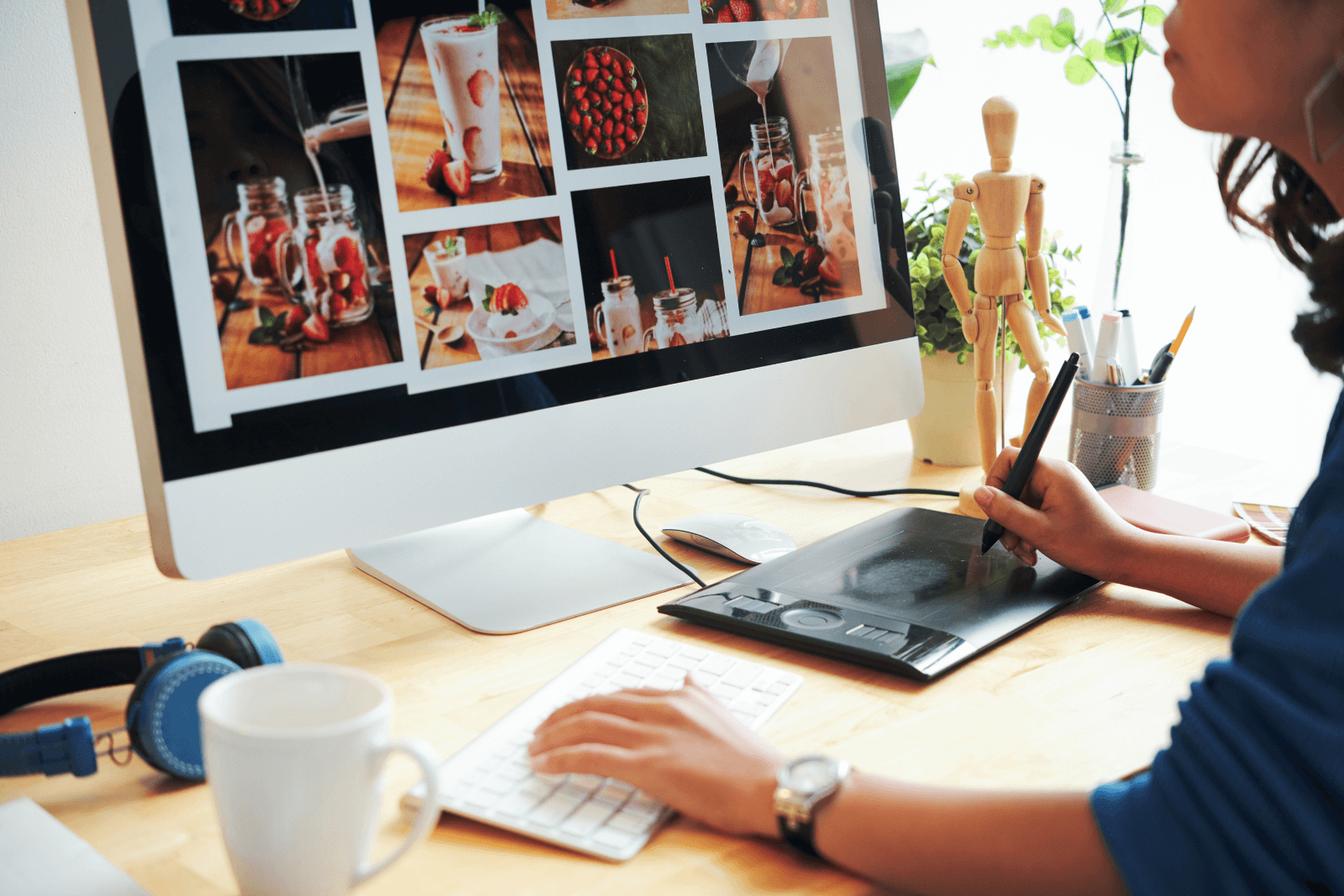
How to Choose the Perfect Template for Your Restaurant Website

Everything You Need to Know About Restaurant Capacity
